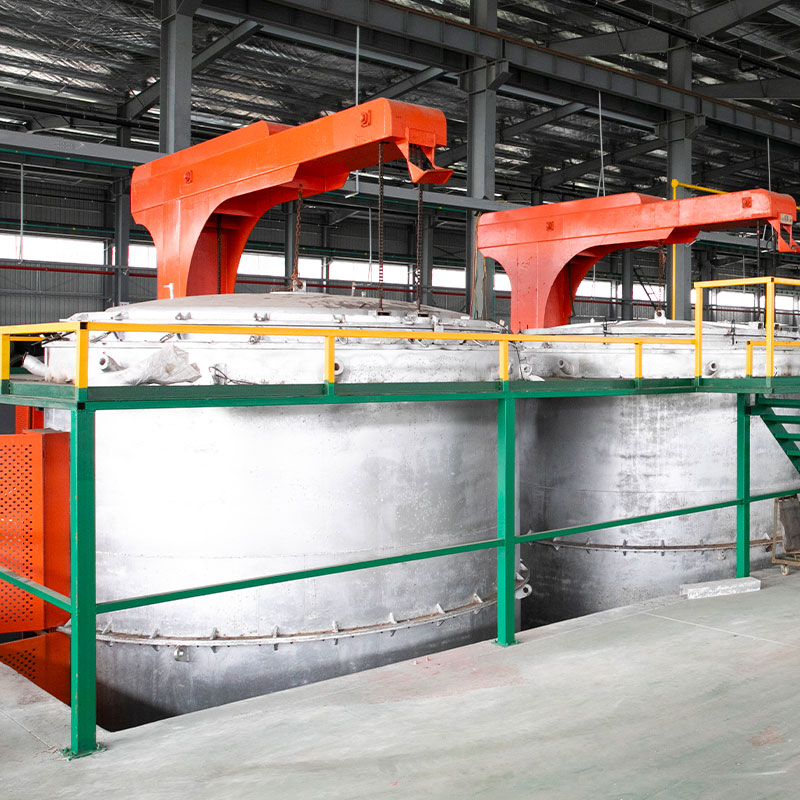Industry News
How do temperature extremes affect the performance of steel fasteners?
Brittle Fracture Risk: At temperatures below the ductile-to-brittle transition temperature (DBTT), steel fasteners become highly susceptible to brittle fracture...

Mild steel is carbon steel with a carbon content o...

Medium carbon steel is carbon steel with a carbon ...

Alloy steel In addition to iron and carbon, other ...

Bearing steel, also known as high carbon chromium ...

Fasteners must be manufactured from raw materials,...

Special-shaped steel refers to steel whose shape i...

Directionality of Brushed Lines: Brushed process steel is characterized by fine, linear abrasions that create a distinctive surface texture. Under directional lighting, such as sunlight or focused artificial lighting, these brushed lines become more pronounced. This effect occurs because the light reflects off the raised portions of the brushed lines more intensely than the recessed areas. As a result, the directional light enhances the visibility of the brushed pattern, creating a dynamic visual texture that varies depending on the angle of incidence and observation.
Reflection and Sheen: The brushed texture of steel influences how it reflects light. In environments with direct or strong lighting, brushed steel surfaces exhibit a reflective sheen that emphasizes the brushed pattern. This reflective quality adds depth and visual interest, making brushed steel suitable for applications where architectural elements or industrial surfaces benefit from enhanced aesthetics. The play of light and shadow across the textured surface can create captivating visual effects, enhancing the overall design impact.
Color Perception: The perceived color of brushed steel can vary under different lighting conditions, particularly with varying color temperatures of light sources. Steel itself has a neutral metallic hue, but lighting influences can subtly alter its appearance. Warm lighting, such as incandescent bulbs, may impart a slightly golden or amber tone to brushed steel, enhancing its warmth. In contrast, cool lighting, such as fluorescent or LED lights, can give brushed steel a cooler, bluish or silvery tint. Designers and architects consider these color variations when selecting materials to achieve desired aesthetic effects that complement the overall design scheme.
Smoothness vs. Texture: Under diffuse or ambient lighting, brushed steel tends to appear smoother and less textured compared to environments with directional lighting. Diffuse lighting minimizes the visibility of individual brush strokes, resulting in a more uniform surface texture that leans towards a matte finish. This characteristic is often preferred in applications where a softer, less pronounced texture is desired, such as interior architectural elements or furniture surfaces.
Shadow Play: Lighting conditions that cast shadows onto brushed steel surfaces can significantly alter their appearance and perception of texture. Shadows interact with the raised and recessed areas created by the brushing process, accentuating the texture and creating visual depth. The interplay of light and shadow enhances the three-dimensional quality of brushed steel, making it an engaging material choice for architectural features, sculptures, and decorative surfaces. Designers leverage this effect to create visually dynamic spaces that evolve throughout the day as lighting conditions change.
Environmental Lighting: Outdoor environments introduce natural daylight and artificial street lighting, each influencing how brushed steel is perceived. Natural daylight reveals the full spectrum of the steel's texture and color, highlighting its metallic luster and showcasing the craftsmanship of the brushing technique. The intensity and color temperature of artificial lighting sources vary widely, influencing the appearance of brushed steel surfaces accordingly. Designers and engineers consider these environmental factors when specifying materials for outdoor applications to ensure optimal visual performance and durability over time.


We are a source manufacturer of professional steel wire, we also have our own international trade department, we produce and sell by ourselves.
Ningbo SunRise Refined Metal Wire Material Co., Ltd. is China Custom How does the texture and appearance of brushed process steel change under different lighting conditions? Suppliers and How does the texture and appearance of brushed process steel change under different lighting conditions? Factory. We not only brought in 10 sets of spheroidizing annealing furnaces, dozens of metal wiredrawing equipments and twoworld's leading automatic phosphating pickling lines, but also engaged senior engineers as consultants fromTaiwan. The raw material that we use are supplied by the well known suppliers such as Bao Steel Co., Ltd and Xingtai lron & Steel Corp., Ltd. Also, the domestic lron & Steel manufacturers can be nominated by our customers.
We mainly produce steel wire made of alloy steel, bearing steel, free-cutting steel, high-quality carbon structural steel, low-alloy high-strength structural steel and other materials as raw materials. The annual output is 360,000 tons. It is one of the largest finished wire production bases in Ningbo. We serve all kinds of fasteners, special-shaped parts, automotive fasteners, wind power, petroleum and other fields. Ningbo SunRise is able to meet the high quality requirements of our customers throughout the whole operation process from raw materials to finished products.
Brittle Fracture Risk: At temperatures below the ductile-to-brittle transition temperature (DBTT), steel fasteners become highly susceptible to brittle fracture...
Corrosion Risk: Despite the enhanced corrosion resistance imparted by the phosphate coating, the steel can still be susceptible to corrosion under certain condi...
Directionality of Brushed Lines: Brushed process steel is characterized by fine, linear abrasions that create a distinctive surface texture. Under directional l...
High Hardness: Bearing steels are engineered to achieve specific hardness levels necessary for withstanding heavy loads and maintaining dimensional stability. T...
Contact Us
Your email address will not be published. Required fiels are marked